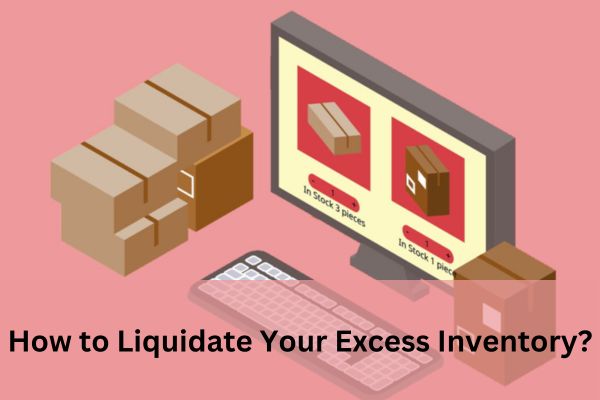As an Amazon seller, you may inevitably find yourself in a situation where you need to liquidate excess inventory. Liquidating stock is a common practice in retail businesses, but it can be a complex and time-consuming process. It can significantly impact your cash flow, tie up valuable resources, and hinder your overall business growth. To ensure a smooth liquidation process and minimize financial losses, it is essential to understand the available options and strategies.
Table of Contents
Toggle
When do you need to liquidate your inventory?
Inventory liquidation becomes necessary when businesses have excess stock that is not selling or is nearing its expiration date. It may also be required when a company is closing down or undergoing a significant change in business strategy.
What to consider before liquidating excess inventory?
Before deciding to liquidate excess inventory, consider the following factors:
- Demand: Determine if there is any potential for future sales or if the demand for the product is unlikely to increase.
- Holding costs: Calculate the costs associated with storing the inventory, including rent, utilities, insurance, and labor.
- Profitability: Assess the potential profitability of selling the inventory at a discounted price versus the cost of holding it.
- Brand image: Consider the impact of selling the inventory at a significantly reduced price on your brand’s reputation.
- Market conditions: Evaluate the current market conditions and competition to understand the feasibility of selling the inventory.
Benefits of Liquidating Inventory
- Recovering capital: Liquidation allows businesses to convert excess inventory into cash, which can be reinvested in other areas of the business.
- Cost reduction: By clearing out excess inventory, businesses can reduce storage and holding costs associated with storing unsold products.
- Focus on core products: Liquidating slow-moving inventory frees up resources and allows businesses to concentrate on their best-selling products.
- Maintaining brand value: Avoiding the accumulation of outdated or obsolete inventory helps businesses maintain a positive brand image and customer satisfaction.
What is Amazon FBA Liquidation?
Amazon FBA (Fulfillment by Amazon) liquidation refers to the process of selling excess inventory stored in Amazon’s fulfillment centers. It allows Amazon sellers to dispose of unwanted products and recover a portion of their investment.
How does Amazon FBA liquidation work?
The process of Amazon FBA liquidation involves the following steps:
- Inventory removal order: Sellers initiate the liquidation process by creating a removal order in their Amazon Seller Central account.
- Inventory assessment: Amazon inspects and categorizes the inventory based on its condition and determines if it is suitable for resale or liquidation.
- Liquidation options: Amazon offers two liquidation programs: “Amazon Liquidation Auctions” and “Amazon Warehouse Deals.” Sellers can choose the program that best suits their needs.
- Auction or discounted sale: The inventory is either auctioned off to third-party buyers or offered at a discounted price through the Amazon Warehouse Deals platform.
- Payment and shipping: Once the inventory is sold, sellers receive payment from the buyer or Amazon, and Amazon handles the shipping process.
Fees involved in FBA liquidation Amazon charges fees for the FBA liquidation process, which typically include:
- Removal order fees: These fees cover the cost of removing the inventory from Amazon’s fulfillment centers.
- Liquidation fees: Amazon charges a percentage fee based on the price at which the inventory is sold.
- Shipping fees: If Amazon handles the shipping of the liquidated inventory, there may be additional fees associated with transportation.
Other liquidation options Apart from Amazon FBA liquidation, there are other options to consider:
- B2B liquidation marketplaces: Online platforms that connect businesses looking to liquidate inventory with potential buyers.
- Wholesale liquidators: Companies specialized in purchasing excess inventory at a discounted price for resale.
- Liquidation auctions: Auctions where excess inventory is sold to the highest bidder.
- Offline sales channels: Utilizing physical retail stores, discount outlets, or flea markets to sell excess inventory.
It’s important to evaluate each option based on your specific business needs, the condition of the inventory, and the potential returns to determine the most suitable liquidation method.
If you want to sell your excess inventory Liquidation then, please contact info@liquidateproducts.com or (224)619-7639.